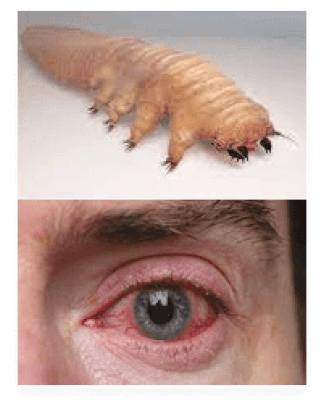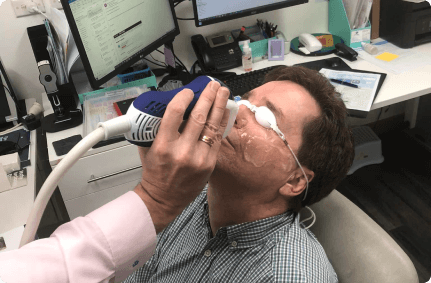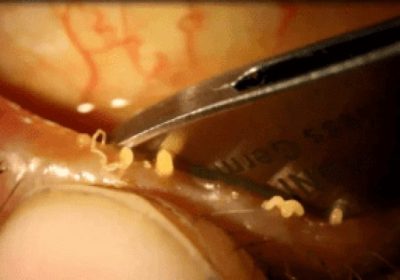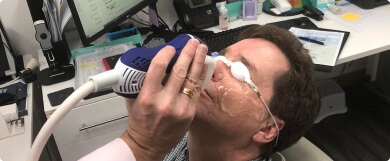Dry Eyes
Do you have dry or irritated eyes? Dry eye occurs when the tear film, re-established with each blink, is not efficiently lubricating the eye surface.
Dry eye symptoms such as irritation, itch, burning and grittiness can also be due to a wide range of conditions including allergies, clogged tear ducts, smoking, poor hygiene when using contact lenses, Vitamin A deficiency, systemic medications, incomplete blinking, viral conjunctivitis, styes, dust, and medical conditions. A poor-quality tear film can make life miserable.

Dry eye becomes more common as we age, tear production decreases or tears don’t remain stable on the eye’s surface. The tear film is a complicated multi-layered structure which is swept away and reformed with every blink. The most common dry eye problem is due to tear evaporation which occurs when there is inadequate Meibomian Gland secretion of oils. These oils create the most anterior layer of the tear film which is known as the lipid layer.
The lipid layer is responsible for keeping the eye’s surface smooth and controls tear evaporation. When this lipid layer is not functioning well, the eye’s surface dries in patches and can feel gritty. Effective treatment options such as Intense Pulsed Light (IPL) are now available.
Your environment can also play a role with dry eyes. For example, working in air conditioning for long periods of time or working in a dry/dusty environment. We all tend to blink less while using computers or watching television for long periods of time leading to increased disruption to the ocular surface.
Dry eye symptoms include:
-
Tired eyes
-
Red / Irritated eyes
-
Blurred vision
-
Light sensitivity
-
String like discharge
-
A gritty sensation
-
Itchy / Burning eyes

At what stage should you seek help from us?
If you are experiencing dry eye symptoms for a prolonged period with no relief, contact us for a dry eye assessment. These symptoms can become debilitating for some patients which is why we offer sore eye consultations for those who urgently need to be seen. Call our team to see what availability we have if you feel you need medical attention. If you are unable to wait for an appointment, contact your General Practitioner.
Options for treatment may include a combination of one or any of the following:
-
Prescription antibiotic / anti-inflammatory / anti-allergy drops
-
Bandage contact lenses
-
Lid cleaning regimes
-
Lubricating gels / ointments / drops
-
Intense Pulsed Light (IPL)
-
Omega 3/6 Tear film supplementation
-
Medihoney
-
Warm Compresses.
-
Sleeping masks
-
Punctal Plugs
What interventions do we offer?
After general evaluation of your eye health, our Optometrists can ramp up your dry investigation using infra-red imaging of your Meibomian Glands, topographical video analysis of your tear film, measurement of tear film volume production, evaluation of your corneas, conjunctiva, lid margins, tarsal plates, lower fornices, and Meibomian Gland secretions to determine why you experience dry eye symptoms and what treatment options best suit your presenting condition. Only with a full tear film investigation can we provide you the best advice.


What is Intense Light treatment?
After general evaluation of your eye health, our Optometrists can ramp up your dry investigation using infra-red imaging of your Meibomian Glands, topographical video analysis of your tear film, measurement of tear film volume production, evaluation of your corneas, conjunctiva, lid margins, tarsal plates, lower fornices, and Meibomian Gland secretions to determine why you experience dry eye symptoms and what treatment options best suit your presenting condition. Only with a full tear film investigation can we provide you the best advice. Intense pulsed light therapy (IPL) is the use of pulsed light to stimulate the eyelid glands. This helps to loosen trapped oils and encourage the glands to function productively again.
How does it work?
The Optometrist will place protective material over your closed eyelids and apply gel to your lower lids / upper cheeks and temporal area. A series of flashes are then administered to the area around both eyes. The flashes can be warm and are intensely bright, but do not burn and are painless.
The Optometrist will then express the oils from approximately 30 meibomian glands along each upper and lower lids.

This squeezing can be uncomfortable but is necessary to allow the meibum within the glands to improve. The discomfort should ease with each session as the oils loosen and flow freely. Anaesthetic is often applied to the lid margin to break the cell barriers of any keratinisation overlying the Meibomian gland orifice which makes expression easier but doesn’t relieve the discomfort.
Depending on your eye health IPL treatments can run from 6 to 12 sessions. Our optometrist can provide you an estimate of the number of sessions required directly after assessing your tear film and eyelid status. Most people require one session a week over 6 weeks.

Expression of Meibomian glands with thick oils

Healthy clear oils
Occasionally, improvement can be rapid and less sessions are required. To improve outcomes patients, continue to use eye drops daily, use a warm eye compress at home to maintain the effects of each treatment, take Omega 3/6 tear supplements and apply sunscreen to prevent sunburn to the treated facial region.
Tip: If you are receiving IPL treatment, advise the Optometrist if you are wearing false lashes, have any unusual moles in the treatment zones or you are taking any sunlight sensitive medications, so the placement and intensity of the light flashes can be adjusted.
Blepharitis (Inflammation of the eyelids)
Dry Eyes and Blepharitis are often partners in crime with each exacerbating the other. Blepharitis is a chronic condition where the natural bacteria that lives on the skin clogs the tiny glands of the eyelid margins. This creates a crust on the lashes and eyelid margins and the eyes become red and irritated. Demodex mites are often in plaque proportions when Blepharitis is acute and often bacterial infestations such a Staphylococci and Corynebacterium are abundant. This is why maintaining good hygiene when dealing with your eyes is important. Blepharitis is treated by using a warm compress over the eyes, regularly cleaning eyelids, massaging the eyelids (with clean hands) discontinuing the use of contact lenses and avoiding the use of eye makeup. Leaving this condition untreated can lead to permanent damage to the eyelids and Cornea.

For a comprehensive evaluation of your dry eye symptoms and personalised treatment options, contact our expert team to schedule a consultation today. We’re dedicated to addressing the cause of your condition and tailoring a suitable regimen just for you. We are happy to ask any questions you may have. We also offer a wide selection of dry eyecare products including lubricating drops, ointments, warm compresses, supplements, and sleeping masks. Your comfort and well-being are our priority.
